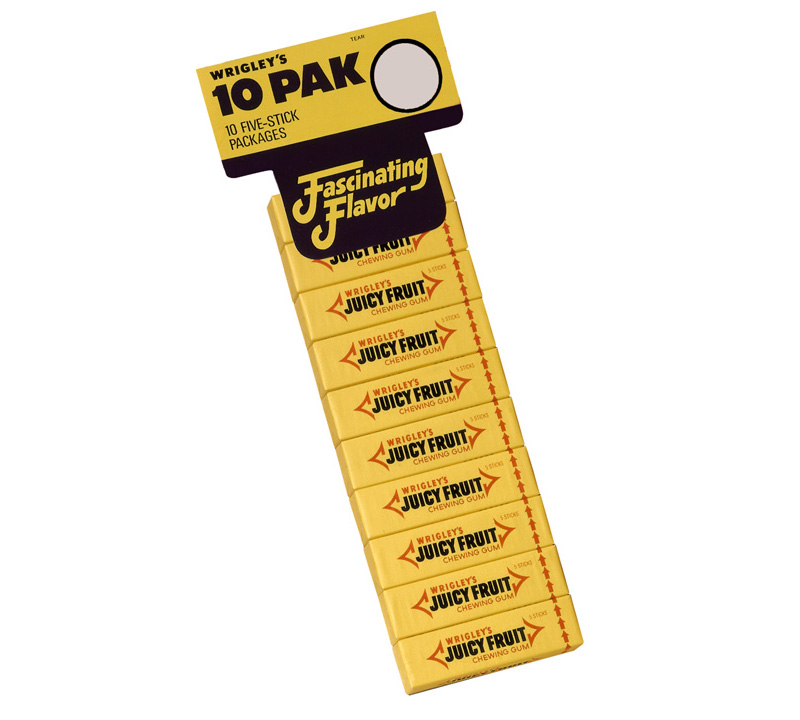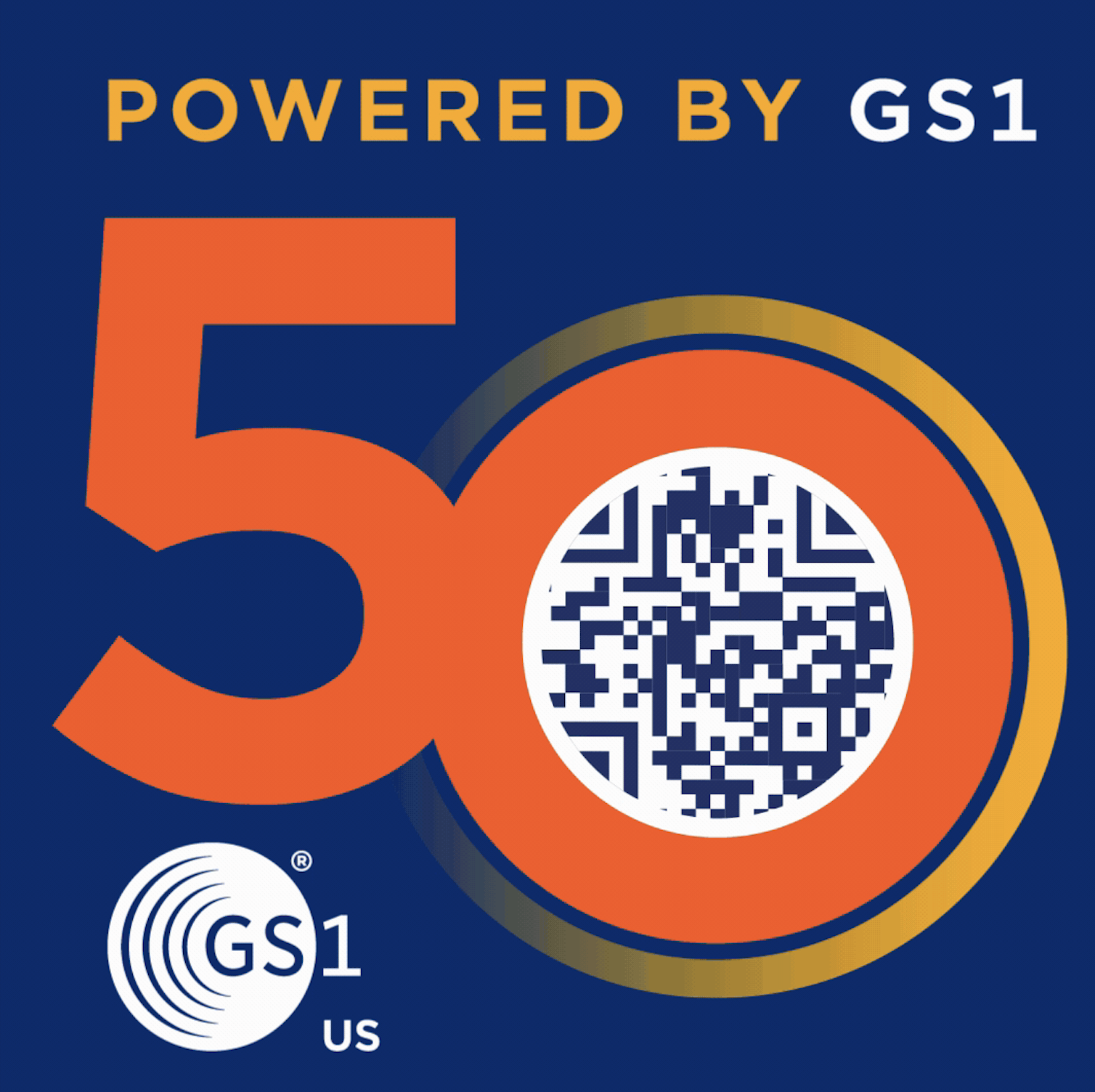The evolution of barcodes
For over five decades, the familiar black-and-white lines of barcodes have quietly powered global commerce, but it is time to prepare for a future where they don’t just ring up prices but unlock a world of data, transparency and connectivity.

Barcodes have been a staple of retail for five decades, with their simple black lines becoming synonymous with modern commerce. However, a new chapter in barcode evolution is unfolding. The once static and basic barcodes are being replaced with more advanced two-dimensional (2D) codes, which promise to unlock a range of benefits for consumers, brands, retailers and the entire supply chain. Let’s explore the journey and future of barcodes, from their inception to the upcoming digital transformation.
The birth of the barcode
Fifty years ago, in 1974, a pivotal moment in retail history occurred with the first-ever barcode scan. The scan was performed at a Marsh Supermarket in Troy, Ohio, on a 10-pack of Wrigley’s chewing gum. This marked the beginning of a new era of retail and supply chain automation, fueled by the introduction of the Universal Product Code (UPC) developed
by GS1 US, the not-for-profit organization responsible for global barcode standards.
Bob Carpenter, president and CEO of GS1 US, reflects on the barcode’s origins: ‘The barcode was created to solve a pressing issue—slow and manual checkout processes in grocery stores. Before its introduction, every product required a price tag, and cashiers manually entered each price. The barcode streamlined this process, allowing for automatic price lookup and dramatically speeding up transactions.’
"QR code enables brands to update data instantaneously through an online portal, ensuring consumers always have the latest information"
Since that first scan, barcodes have become an integral part of global commerce, identifying over a billion products and being scanned more than 10 billion times daily. While the traditional barcode has primarily served to provide pricing information, the retail landscape is shifting toward greater transparency and consumer engagement, driven by increasing demands for detailed product data.
Consumers demand more information
Recent consumer behavior research conducted by GS1 highlights a growing demand for more information at the point of purchase. The survey revealed that 77 percent of consumers believe that product information is essential when making a purchase decision, and 79 percent prefer products with scannable codes that offer additional details, such as nutritional information, allergens or sourcing data.
This shift has spurred a digital transformation in the retail industry. While barcodes were once limited to price lookups, they are now evolving into dynamic tools that connect consumers with valuable information via their smartphones. One example of this is the increased use of QR codes. These codes, often printed alongside traditional barcodes, allow consumers to scan and instantly access detailed product information online.

Carpenter explains: ‘A product’s packaging can take up to 18 months to change, particularly when adjusting key information like allergen warnings or nutritional content. However, a QR code enables brands to update this data instantaneously through an online portal, ensuring consumers always have the latest information. This shift is not just about convenience — it’s about giving consumers control and making informed decisions easier.’
The next-generation barcode
To meet these evolving consumer expectations, GS1 has developed a new two-dimensional (2D) barcode that builds on the existing UPC standard. These next-generation codes not only deliver product pricing at checkout but also function like QR codes, providing rich, detailed product information to consumers. This technology is designed to support both in-store checkout systems and mobile scans, offering versatility across retail environments.
‘What started as a need for speed using the UPC barcodes has transformed into a need for access to product-related information,’ says Carpenter. ‘With better inventory management, traceability and sustainability data, the new GS1 standards incorporate QR codes to deliver this real-time information.’
The 2D barcodes are designed to merge the capabilities of both UPC and QR codes, allowing for a seamless checkout experience while giving consumers access to product origin, manufacturing dates, lot numbers, expiration dates, and more with just a simple scan. The potential impact of this technology extends beyond retail, providing greater transparency and efficiency across the entire supply chain.
Benefits across the supply chain
The transition to 2D barcodes offers significant advantages to stakeholders across the supply chain. By enabling the seamless capture and exchange of product data between trading partners, these codes enhance supply chain visibility and control. This is particularly critical for industries like food and pharmaceuticals, where traceability and compliance are vital for safety.
For example, Topco Associates, one of the largest sourcing companies in the retail and grocery industry, has adopted 2D barcodes for end-to-end supply chain traceability. These codes support the company in meeting increased record-keeping requirements under the US Food and Drug Administration’s Food Safety Modernization Act (FSMA) Rule 204, which is designed to improve food safety and protect consumer health.
Carrie Wilkie, senior vice president of technology at GS1-US, underscores the importance of this technology for both businesses and consumers. ‘2D barcodes enable superior supply chain visibility, improving inventory management and recall readiness,’ she says. ‘For consumers, this means easier access to health, allergen, recall, and coupon information through a simple smartphone scan.’
By bridging the gap between online and offline retail experiences, 2D barcodes create a digital portal for consumers to access personalized content, fostering stronger engagement and satisfaction.
The road to Sunrise 2027
In response to the growing need for more advanced barcodes, GS1 US launched the Sunrise 2027 initiative, a multi-year effort designed to transition the retail industry from traditional UPC barcodes to 2D barcodes by 2027. This industry-wide initiative brings together major retailers, brands and other stakeholders to establish standards, conduct testing and ensure a smooth transition to the new barcode system.
Sunrise 2027 is a collaborative process that involves setting requirements, analyzing results, and optimizing the use of 2D barcodes in various retail environments. GS1’s role as a neutral standards body is critical in coordinating these efforts to ensure that all stakeholders—brands, retailers, regulators and consumers—benefit from the new technology.
Industry support for the transition
The transition to 2D barcodes is gaining widespread support from some of the world’s largest brands. Companies like Procter & Gamble, L’Oréal and Nestlé have publicly endorsed the move to next‑generation barcodes, recognizing
the potential to revolutionize the consumer experience.
Alfredo Colas, senior vice president of information technology at Procter & Gamble, emphasizes the importance of this shift: ‘By adopting 2D barcodes with GS1 standards, we’re empowering consumers with greater access to information and improving traceability throughout the supply chain. This commitment to innovation underscores our dedication to delivering a superior consumer experience and value to all stakeholders.’

Retailers are also preparing for the transition. Wegmans Food Markets, a pioneer in barcode technology, was one of the first to scan a UPC and is now leading the charge in testing 2D barcodes for future use. ‘We’re actively pressure-testing our capabilities to ensure readiness for this industry transition,’ says Dave DeLaus, Wegmans’ senior vice president and chief information officer.
Publix, one of the largest grocery chains in the US, is also enthusiastic about the transition. Dave Bornmann, senior vice president of product business development at Publix, believes that 2D barcodes will empower consumers to make more informed purchasing decisions while improving inventory management and store operations.
Preparing for the future of barcodes
As the retail and packaging industries prepare for the widespread adoption of 2D barcodes, it is clear that this technology offers numerous benefits. Not only will it free up packaging space, giving brands more room to communicate with consumers, but it will also support the digital transformation of retail by integrating online and offline experiences.
GS1 continues to play a pivotal role in bringing together organizations across industries to establish best practices for 2D barcode implementation. As the barcode celebrates its 50th anniversary, this next chapter in its evolution promises to shape the future of retail and supply chain management for years to come.
Bob Carpenter concludes: ‘The 50th anniversary of the UPC barcode scan serves as a testament to the lasting relevance of GS1 standards in an ever-evolving marketplace. As we embark on the next chapter of barcode innovation, GS1 US remains committed to driving progress and facilitating meaningful advancements that will shape the next 50 years and beyond in retail and supply chain.’
Stay up to date
Subscribe to the free Label News newsletter and receive the latest content every week. We'll never share your email address.


